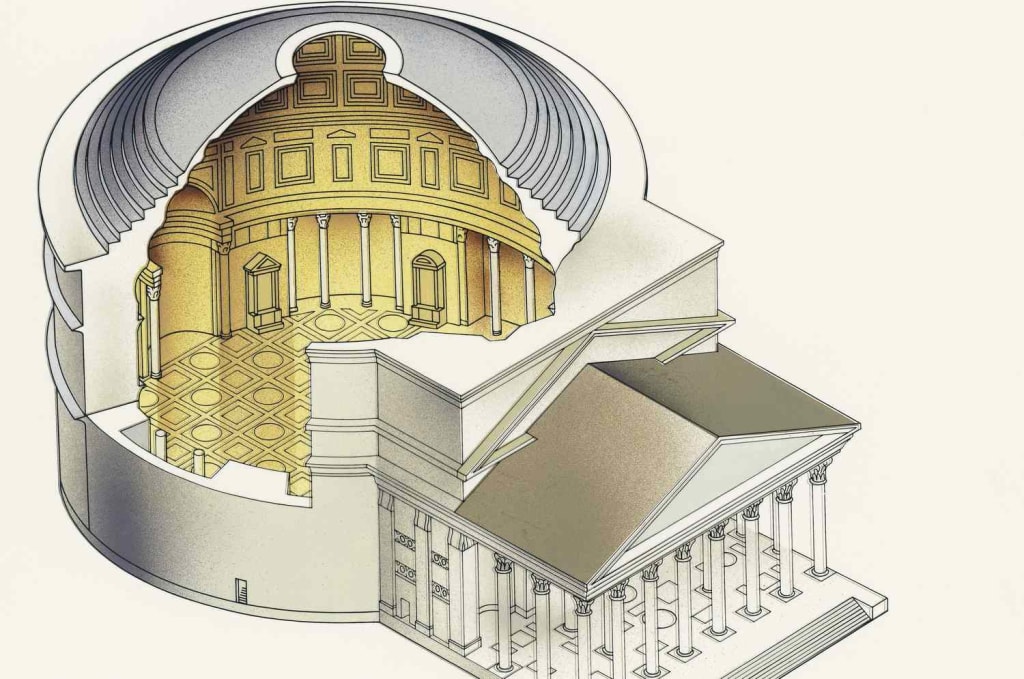How did the Romans build their domes?
Roman Concrete Dome Construction: Techniques used in constructing domes like that of the Pantheon, showcasing innovative architectural methods.

The Romans were masters of engineering and architecture, and their construction of domes represents a pinnacle of ancient architectural achievement. The techniques they developed and refined allowed them to create some of the most iconic and enduring structures in history, showcasing both their ingenuity and their understanding of materials and structural mechanics.
Historical Context
During the Roman Empire, domes became a hallmark of Roman architecture, prominently featured in public buildings, temples, and baths. The Romans drew inspiration from earlier civilizations, such as the Greeks and Etruscans, but they advanced the technology of dome construction significantly, pushing the boundaries of what was achievable with their materials and engineering prowess.
Materials and Structural Innovation
1. Concrete: The Romans are renowned for their mastery of concrete, which was a fundamental component in their architectural achievements. Unlike the Greeks, who primarily used stone and marble, the Romans developed a durable and versatile concrete formula that could be poured into molds and shaped as needed. This innovation allowed them to create complex forms, including domes, with relative ease.
2. Architectural Elements: The key to Roman dome construction lies in their use of arches and vaults. The arch, a semicircular structure that redistributes weight efficiently, was a foundational element in Roman architecture. By combining arches in a circular or polygonal arrangement, Romans could create the hemispherical shape of a dome. Vaults, which are essentially extended arches, provided additional support and stability.
Techniques of Dome Construction
1. Centring and Formwork: To build a dome, Romans would construct a temporary wooden framework called centring or formwork. This framework supported the weight of the concrete or stone as it was being laid, allowing builders to work upward from the base to the apex of the dome.
2. Layered Construction: Domes were often constructed in layers, with each layer gradually reducing in thickness as the dome rose. This technique helped distribute the weight evenly and ensured structural integrity throughout the construction process.
3. Oculus and Compression Rings: At the apex of many Roman domes, builders would often leave a circular opening called an oculus. This not only allowed natural light to enter the structure but also reduced the weight of the dome and provided ventilation. Surrounding the oculus, compression rings made of stronger materials were sometimes used to reinforce the dome at its most vulnerable point.
Iconic Examples
1. Pantheon: The Pantheon in Rome is perhaps the most famous example of Roman dome construction. Completed around 126 CE during the reign of Emperor Hadrian, its massive concrete dome spans 43 meters and remains the largest unreinforced concrete dome in the world. The oculus at its apex allows sunlight to filter into the temple, highlighting the Romans' architectural and engineering sophistication.
2. Baths of Diocletian: Built between 298 and 306 CE, the Baths of Diocletian in Rome feature several large domes that once covered the bathing halls and other facilities. These domes demonstrated the Romans' ability to scale their construction techniques to accommodate vast public buildings.
Legacy and Influence
The Roman techniques of dome construction had a profound influence on later architectural styles and civilizations. Byzantine architects, for example, refined Roman methods to create the iconic domes of Hagia Sophia in Constantinople (modern-day Istanbul), showcasing a continuation and evolution of Roman engineering principles.
Conclusion
The Romans' ability to build domes reflects their advanced understanding of materials, engineering, and architectural design. Through their innovative use of concrete, arches, and vaults, they created enduring structures that continue to inspire awe and admiration today. The Pantheon and other Roman domes stand as lasting testaments to their ingenuity and technical expertise, highlighting their legacy as pioneers in architectural innovation and construction techniques.
About the Creator
Marveline Merab
“History never repeats itself. Man always does.”
― Voltaire
Enjoyed the story? Support the Creator.
Subscribe for free to receive all their stories in your feed. You could also pledge your support or give them a one-off tip, letting them know you appreciate their work.






Comments
There are no comments for this story
Be the first to respond and start the conversation.